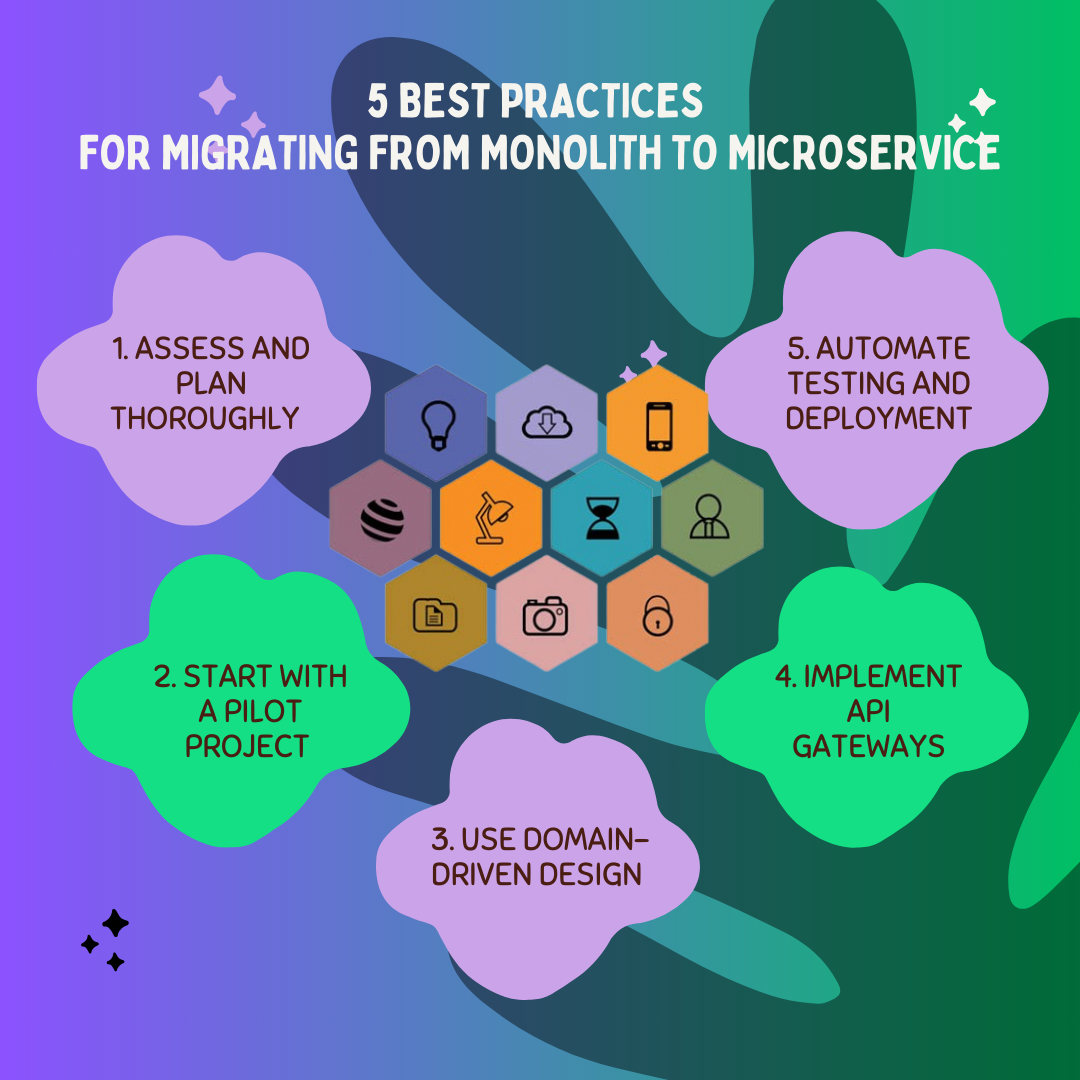There are several reasons why your organization may consider migrating off of a monolithic architecture. Monoliths are difficult to scale. If one application component requires more resources, you must scale the entire application. Moreover, monoliths become difficult to scale and maintain as they grow in size and complexity.
In addition to scaling issues, operating a tightly coupled application introduces inherent risk. As you make changes and add new features, you have to redeploy the entire application—no matter how small your changes are. This increases the likelihood of introducing issues that cause downtime. Plus, if one component of the monolith fails, it can bring down the entire application.
While these issues would cause teams to embrace a microservices architecture, migration is challenging. However, given the advantages – scalability, deployment effectiveness, and system resilience – it is worth exploring migration best practices.
Continue reading and discover recommended tips and best practices for migrating from a monolithic to a microservices architecture.
Key Takeaways:
A microservices migration improves performance and scalability.
Migration can be challenging but may be managed with the help of automated testing, centralized monitoring, and data integrity assurance.
Start with small, non-critical modules to detect problems, improve techniques, and make the larger migration go more smoothly.
Use Domain-Driven Design (DDD) to create scalable and maintainable microservices.
Implementing API gateways allows organizations to manage security, balance load, and monitoring.
To maintain code quality and accelerate deployments, use continuous integration and delivery (CI/CD) solutions like Jenkins and GitLab CI/CD.
5 Best Practices for Migrating from Monolith to Microservice
It’s critical to employ key strategies during the transition to microservices. These include doing a comprehensive analysis and planning, starting with a pilot project, utilizing Domain-Driven Design, adding API Gateways, and automating the deployment and testing procedures to reduce downtime.
The next section will discuss several best practices for migrating from a monolith to a microservice architecture.

Here are five of the tried-and-tested tips and best practices for migrating from monolith to microservice architecture:
1. Assess and Plan Thoroughly
Assessing and planning thoroughly is crucial to ensuring a smooth transition from a monolithic to a microservices architecture. By identifying the system’s current dependencies, performance constraints, and design, you can more clearly define which components need to be detached.
Detailed planning facilitates a successful and effective transfer by:
- Assisting in the identification of dependencies
- Anticipating possible obstacles
- Creating a clear and actionable plan
Planning guides a smoother transition by laying out steps and dates, anticipating problems, and mapping links between components. It facilitates the distribution of resources, reduces downtime, and improves stakeholder communication, resulting in a successful transfer.
Pro Tip:
Use tools like service dependency graphs to visualize and understand service interactions within your monolith.
2. Start with a Pilot Project
Start by choosing a feature or module with minimal dependencies to use as your pilot project. This isolated component allows experimentation and finding problems in a controlled setting. By addressing issues and refining your strategies, you can lay the groundwork for a more thorough migration during this initial phase.
You can prevent important functionality from being broken during a migration by mapping interdependencies. System integrity is ensured by knowing the relationships between services and foreseeing problems with data consistency and communication. A clear plan also guarantees a more seamless and effective transition by setting realistic deadlines and allocating resources effectively.
Pro Tip:
Use tools like service dependency graphs to visualize and understand service interactions within your monolith.
3. Use Domain-Driven Design (DDD)
Domain-Driven Design (DDD) aims to align software systems with business domains by defining delimited contexts, identifying core domains, and establishing a common language among stakeholders. This methodology facilitates the establishment of distinct service boundaries, leading to well-integrated and loosely connected microservices.
Implementing DDD can minimize dependencies, improve scalability and maintainability, and ensure that services are aligned with business processes. DDD divides services like order management, transaction processing, and patient records to create more organized and effective systems in e-commerce platforms, banking systems, and healthcare applications.
Pro Tip:
Involve domain experts in the design phase to ensure services align well with business needs.
4. Implement API Gateways
API gateways are crucial for controlling the flow of information between external clients and microservices. By forwarding requests to the relevant microservice, they serve as a single point of contact for all client requests, streamlining communication.
Implementing API gateways is especially beneficial when there are multiple clients with varying needs or when services must scale independently. For example, An e-commerce platform using API can do the following:
- Redirect user queries to the payment service
- Order service
- Catalog service as needed
This configuration increases the overall robustness and performance of the system while also simplifying the client-side logic.
Pro Tip:
Use API gateways to implement cross-cutting concerns like authentication and rate limiting centrally.
5. Automate Testing and Deployment
In a microservices architecture, automated testing and continuous integration or continuous deployment (CI/CD) are essential for:
- Ensuring code quality
- Speeding up deployments
- Minimizing manual errors
By doing tests at every level of development, automation ensures consistent code quality, identifies problems early, and facilitates dependable, quick deployments.
Jenkins, for instance, may automate the coding and testing process, ensuring that any problems are detected early. Version control and GitLab CI/CD work together smoothly to automate the whole pipeline—from code commit to deployment. CircleCI provides powerful orchestration for complex workflows, guaranteeing that each code change is rapidly and properly tested.
Pro Tip:
Implement automated end-to-end testing to ensure that services work together seamlessly after each deployment.
Conclusion
Transitioning from a monolithic to a microservices architecture is challenging and requires careful planning and execution. Using the recommended tips and best practices in your migration strategy may significantly increase the likelihood of success.
Teams may make a smoother transition from monolithic to microservice architectures by starting with a pilot project, applying Domain-Driven Design, using API gateways, and automating testing and deployment.
FAQs on Tips and Best Practices for Migrating Monolith to Microservices
What is the best way to decompose monolithic to microservices?
By implementing the best practices, organizations can effectively manage risks, guarantee data integrity, and provide a seamless migration to microservices.
What is the migration strategy for microservices?
The first step in moving monolithic apps to Kubernetes and microservices is often to adopt a lift-and-shift strategy.
When to go from monolith to microservices?
Convert from monolith to microservices when your application encounters issues related to fault isolation, scalability, or quick feature development,






